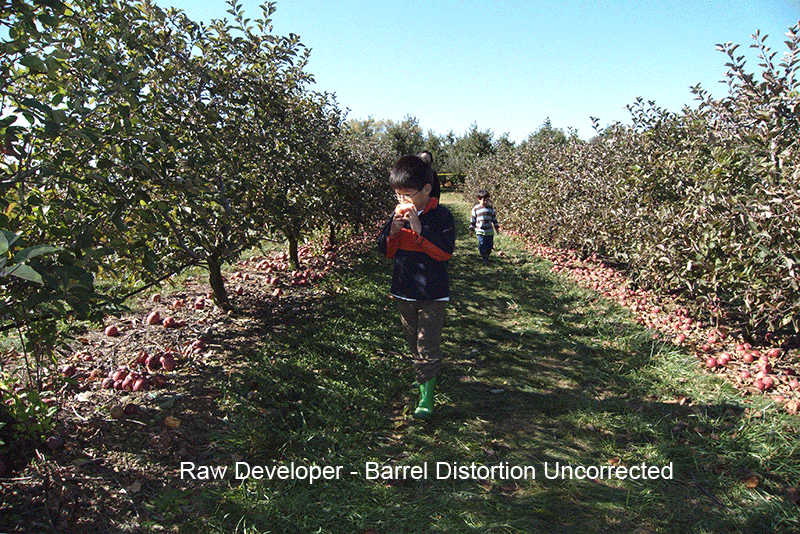I'm pretty confident there will be wide support by third party RAW developers. However, most of them won't automatically correct the barrel distortion.
As you know, for ultimate resolution, it's best to leave the distortion uncorrected. Overall, it's not a big deal to me because of several reasons: 1) I like C1, which supports the D-LUX 4 and automatically corrects the barrel distortion; 2) Raw Developer supports the LX3, and I'm a big fan of RD even though it doesn't correct the distortion; 3) PTLens supports the LX3, so anyone who uses a RAW app that doesn't correct the distortion can do a batch correction in PTLens if desired; 4) When I choose to leave the distortion uncorrected, I have a wider than 24mm equivalent lens, which is a pretty cool option to have.
What I don't like about this situation is that the RAW apps which ship with these cameras (Silkypix for LX3 and C1 for D-LUX 4) don't give you the option to leave the distortion uncorrected. In fact, C1 automatically corrects all the distortion instead of leaving the same bit of barrel distortion that one finds in the in-camera corrected JPEGs. I'd prefer to always have the choice, in any given RAW app, whether to leave the distortion or have it corrected.
As for whether the lens is a good one, I think it is. This is a sharp lens, across the frame, with good contrast and flare resistance. It suffers from some color fringing and a lot of barrel distortion, but that is a compromise I can accept for the lens speed. None of the f/2-2.x lenses from the older digital cameras were this small. Most of those cameras were quite boxy compared to the LX3. This isn't a very good shot, but it shows something that no other compact today can do, which is get this type of background blur at 60mm equivalent with the trees no far behind my wife (D-LUX 4 at full tele, wide open):
The G10 can do it at 100mm equivalent, so it really comes down to the working distance one prefers.
The GX100/200 have a great lens. It too is sharp across the frame, and it has much less barrel distortion than the LX3 lens at the wide end. However, the GX lens is more susceptible to veiling flare, and it's quite slow at the tele end.
The DP1 lens is basically perfect if you can accept the fact that it is f/4 and doesn't zoom. The GRD lens is also hard to fault.
All of the zoom lenses on compacts come with their compromises. I have no regrets so far about going for the LX3/D-LUX.


